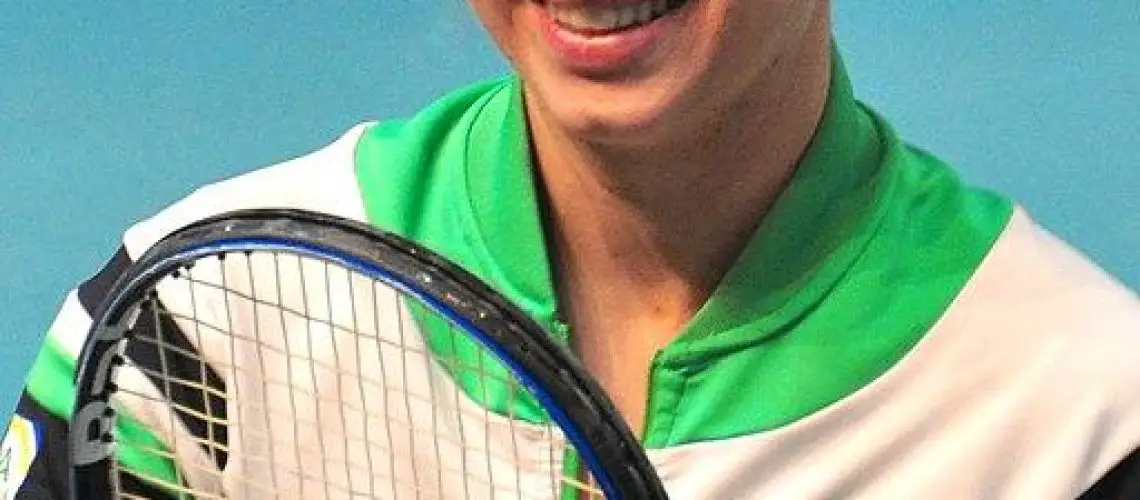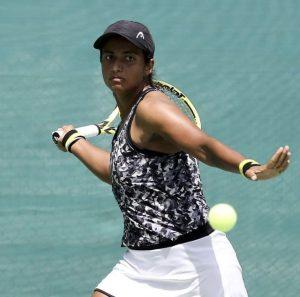We may earn money or products from the companies mentioned in this post.
What Is Seeding In Tennis: An Introduction

When it comes to competitive sports, like tennis, there is often a need for a fair and balanced system to determine the tournament draw This is where seeding comes into play But what exactly does seeding mean in the world of tennis? Let’s dive in and explore this intriguing concept
Definition of Seeding
In tennis, seeding refers to the process of assigning rankings or positions to players before a tournament begins These rankings are based on various factors such as player performance, previous tournament results, and overall skill level
The purpose of seeding is to ensure that top-ranked players do not face each other in the early stages of the tournament By strategically placing them apart in the draw, seeding aims to create a fair competition where players have an equal chance to showcase their skills and progress deeper into the event
History and Evolution of Seeding in Tennis
Seeding has been an integral part of major tennis tournaments for decades, but its origins can be traced back even further In fact, early forms of seeding can be found as far back as the late 19th century when tournaments began implementing methods to avoid top contenders meeting too early in competition
As tennis evolved and became more organized, so did the methods of seeding Initially, it was common for organizers to manually assign seedings based on their subjective opinions or through popular consensus among experts in the field
However, with advancements in technology and data analysis, modern-day seeding systems have become much more objective and accurate Today’s algorithms take into account factors such as player rankings from official governing bodies like the Association of Tennis Professionals (ATP) or Women’s Tennis Association (WTA), recent performance records, and head-to-head matchups
Over time, the methods used for seeding have undergone several changes to adapt to the ever-evolving nature of the sport From manual selections to sophisticated algorithms, tennis tournaments strive to strike a balance between rewarding top-ranked players and providing opportunities for rising stars to make their mark on the game
The Process Of Seeding: How It Works And Its Significance

When it comes to tournaments, seedings play a crucial role in determining the draw and ensuring a fair competition But how exactly are seedings determined, and why do they hold such significance? Let’s dive into the process of seeding, exploring the criteria used for determination and the methods employed for selection
Criteria for determining seedings
1 ATP and WTA rankings:
The first and most common criterion for determining seedings is the players’ rankings in the Association of Tennis Professionals (ATP) or Women’s Tennis Association (WTA) list These rankings reflect their overall performance across various tournaments, making them an essential factor in deciding their seeds
2 Recent performances on specific surfaces:
In addition to rankings, recent performances on specific surfaces also come into play when determining seedings Different players excel on different court types like clay, grass, or hardcourt To ensure fairness, recent performances on relevant surfaces are considered to provide a more accurate representation of a player’s current form
Methods used for selecting seeds
1 Standard seeding method (the “S-curve”):
The standard seeding method follows what is known as the “S-curve” This approach arranges players based on their ranking order using a serpentine pattern that alternates between top-seeded and bottom-seeded players throughout each section of the draw
a) Advantages:
- Ensures higher-ranked players face lower-ranked opponents in early rounds
- Limits the chance of top-ranked players meeting until later stages of the tournament
b) Disadvantages:
- May lead to potential imbalances if a particular section of the draw has a higher concentration of strong players due to the serpentine pattern
- Does not account for specific player styles or match-ups that could influence outcomes
2 Modified seeding methods (used by Wimbledon):
Some tournaments, like Wimbledon, employ modified seeding methods to enhance fairness and accommodate unique circumstances
a) Advantages:
- Allows for adjustments based on grass-court expertise at Wimbledon, as grass plays differently compared to other surfaces
- Gives consideration to past tournament performances, granting defending champions and finalists special seedings
b) Disadvantages:
- Potential debate arises when determining the appropriate weightage for past tournament performances in relation to current rankings
- Can create controversy if deviations from standard seeding methods are perceived as favoritism towards certain players or nationalities
Importance of seedings in tournament draws
1 Balancing the competition:
The primary significance of seedings lies in their ability to ensure a balanced and competitive tournament By strategically placing higher-ranked players against lower-ranked opponents in early rounds, it avoids early clashes between top contenders and allows for a more exciting build-up towards potentially epic showdowns later on
2 Special privileges for seeded players:
In addition to avoiding tough matchups early on, seeded players often enjoy other benefits such as protected rankings, bye rounds (skipping the first round), or favorable scheduling These privileges are designed to reward their consistent performance and maintain fairness throughout the tournament
Seeding Controversies And Debate Points

Common Criticisms Against the Current System
When it comes to seeding in sports tournaments, there are a number of common criticisms that have been raised against the current system One of the most prevalent concerns is that the system tends to protect higher-ranked players at the expense of others This means that players who may be equally or even more skilled than their higher-ranked counterparts often find themselves facing tougher opponents early on in the tournament
Another criticism revolves around the lack of transparency in some cases The process of seeding can sometimes seem arbitrary, with decisions made behind closed doors without clear explanations provided to players and fans alike This lack of transparency can lead to speculation and skepticism about the integrity of the system
Advocacy for Change
In light of these criticisms, there has been a growing advocacy for change within the seeding system Many individuals and organizations have put forth alternative proposals aimed at improving fairness and transparency
One such proposal suggests implementing a weighted seeding system, where recent performance is given more weight than overall ranking This would ensure that players who are currently on top form receive appropriate recognition and do not face an unfair disadvantage due to their lower historical ranking
The role played by player associations should also be considered when discussing changes to the seeding system These associations have a responsibility to represent and advocate for their members’ interests, including fair treatment in tournament seedings By actively participating in discussions and negotiations surrounding seedings, player associations can help ensure a more equitable system for all competitors
Frequently Asked Questions About Seeding In Tennis

Seeding is an essential part of tennis tournaments, but it can vary across different events Let’s explore some commonly asked questions about seeding in tennis
How does seeding differ across various tournaments?
1 Grand Slams vs other events – While all tournaments utilize seeding to some extent, the Grand Slam tournaments hold greater significance These four major events – Australian Open, French Open, Wimbledon, and US Open – have their own unique methods for determining seedings
2 Surface-specific adjustments, particularly at Wimbledon – Wimbledon stands out with its unique grass court surface Here, seedings take into account players’ previous performances on grass courts rather than relying solely on rankings or points
What are unseeded players, and how do they impact a draw?
1 Definitions and implications for competition – Unseeded players are those who have not been assigned a specific ranking in the tournament draw based on their ranking or performance They can pose significant challenges to seeded players as they are often highly motivated to make a mark and upset higher-ranked opponents
2 Examples of unseeded success stories – Throughout tennis history, there have been numerous instances where unseeded players have made remarkable runs in tournaments and even gone on to win championships These underdogs provide excitement and unpredictability to the sport
Can seeded players be upset early in a tournament?
1 Possible causes and factors contributing to upsets – Upsets happen when lower-ranked or unseeded players defeat higher-ranked seeded opponents earlier than expected in a tournament Various factors like injuries, fatigue, lack of form or confidence can contribute to these surprises
2 Notable examples of seeded players losing early – Over the years, we have witnessed several shocking upsets in tennis From Serena Williams being defeated by Naomi Osaka at the 2018 US Open to Rafael Nadal’s loss against Dustin Brown at Wimbledon in 2015, no player is immune to early exits
How has seeding influenced the overall landscape of tennis?
1 Impact on competitiveness and rivalries – Seeding plays a crucial role in maintaining fairness and competitiveness in tennis tournaments It ensures that top-ranked players are positioned to face each other in later stages, intensifying rivalries and creating thrilling matches for fans
2 The role played by seedings in shaping tennis history – Seedings have had a significant impact on the outcomes of tournaments throughout history They can influence the path players take towards victory or defeat and have contributed to shaping iconic moments and legends within the sport
Useful Links

What is Seed in Tennis and How does it Work
Seeding Criteria
How did the word ‘seed’ come to be used in sports?
How Does Seeding Work In Tennis?
The Wimbledon seeding system: History, controversy and …
Playoff Seeding Theory
Why is the tennis seeding system called so? – Betting Dog
Tennis Seeding Meeting Procedures
Tennis Seeding Guidelines.pages
Seeds – The Championships, Wimbledon
Boys Tennis: Key thoughts from the state seeding meeting
Wimbledon | Top Seeds
IHSAA TENNIS 4A STATE CHAMPIONSHIPS
US Open Players | Official Site of the 2023 …
SEEDING COMMITTEE PROCESS
Understanding Tennis: Definition, History, Rules, Types …
Australian Open men’s seedings: Who has been eliminated …






